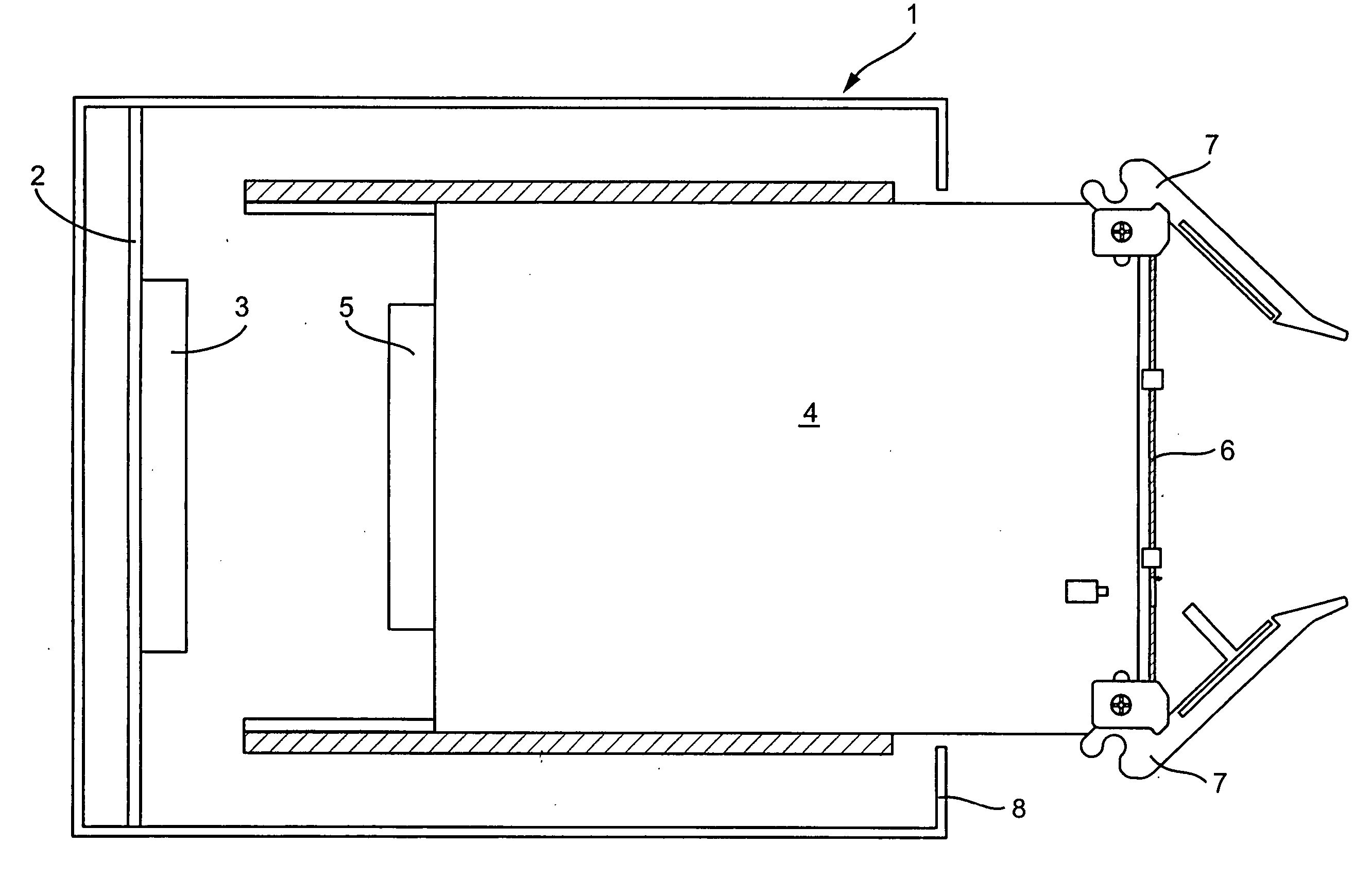Circuit board with lever-latch handle
a technology of lever-latch handle and plug-in circuit board, which is applied in the direction of coupling device connection, coupling parts engagement/disengagement, support structure mounting, etc., can solve the problems of circuit board not being completely completed, circuit board deformation of individual components of the overall plug-in circuit board,
- Summary
- Abstract
- Description
- Claims
- Application Information
AI Technical Summary
Benefits of technology
Problems solved by technology
Method used
Image
Examples
Embodiment Construction
[0033] In the description which follows like parts are marked with the same reference numerals, respectively.
[0034]FIG. 1 illustrates a rack 1 whose rear region is composed of a back wired circuit board 2. A multi-way connector 3 is provided on the back-wired circuit board 2. A plug-in circuit board 4 has a plug 5 on its back side that produces a connection with the multi-way connector 3 in the installed state of the plug-in circuit board 4.
[0035] The plug-in circuit board 4 includes a front plate 6 in its frontal region. Upper and lower lever-latch handles 7 are located at the upper and lower corners of the front plate 6. To push the plug-in circuit board 4 into or pull it out of the rack 1, the lever-latch handles 7 engage a front, profile rail or wall 8 of the rack 1.
[0036]FIG. 2 shows in detail the lower front corner of the plug-in circuit board 4 with the lower lever-latch handle 7. The lower front corner of the plug-in circuit board 4 is provided with an attachment adapter ...
PUM
 Login to View More
Login to View More Abstract
Description
Claims
Application Information
 Login to View More
Login to View More - R&D
- Intellectual Property
- Life Sciences
- Materials
- Tech Scout
- Unparalleled Data Quality
- Higher Quality Content
- 60% Fewer Hallucinations
Browse by: Latest US Patents, China's latest patents, Technical Efficacy Thesaurus, Application Domain, Technology Topic, Popular Technical Reports.
© 2025 PatSnap. All rights reserved.Legal|Privacy policy|Modern Slavery Act Transparency Statement|Sitemap|About US| Contact US: help@patsnap.com



